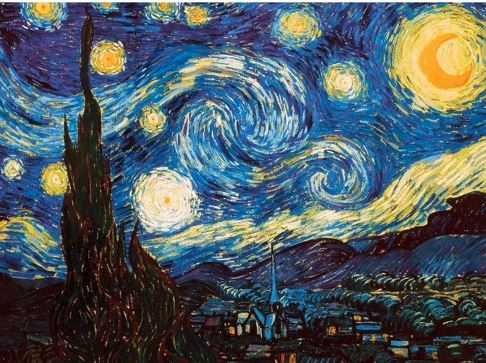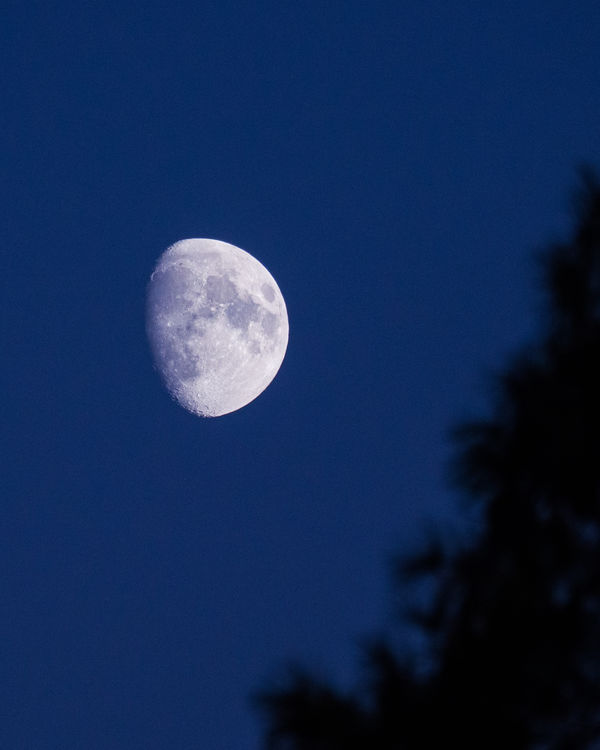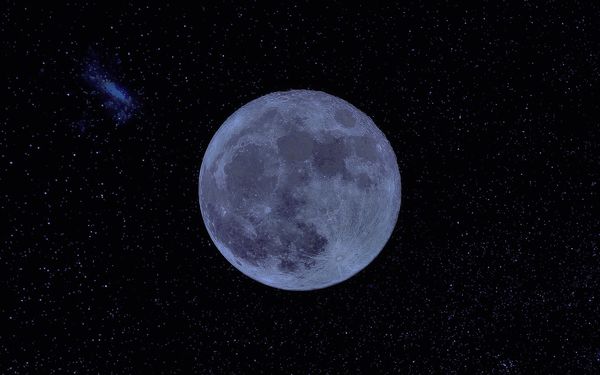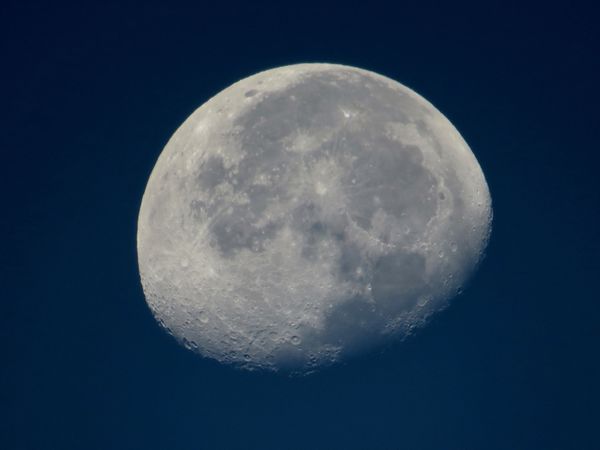What Color the Moon
Oct 27, 2018 17:59:40 #
larryepage
Loc: North Texas area
(Borrowing from a very old song title and building from Linda from Maine's fascinating conversation around proper lunar exposure.)
I have this year gotten very interested in night sky photography. I posted a couple of images of the night sky over Big Bend National Park elsewhere on the forum, so will not do so again here, at least not yet. It seems like there are two or three basic schools of thought around exposure and panorama construction, each of which can be tried and evaluated, but that there is a multitude of opinion around what color the objects in the night sky should be, and by extension, what white balance setting should be used, whether that is set at the time of exposure or as adjusted later in post processing. It may be futile to ask this, but I'd like to ask that we don't get hung up over whether white balance should be set at exposure or fixed later. We already all know our own answer to that question anyway and are not likely to change. I'd just like to have some discussion around what color the moon (or the stars) should appear in our images.
My guess starting out is that there are going to be at least two driving positions pushing us on this question. Some (like me) would like to represent these subjects "correctly." Others may be less concerned about what is correct and much more focused on what is "artistic." So I think it is very unlikely that will get to one consensus answer.
I've already thought about this quite a bit. You may not have. So I'm going to hold back on what I think (yes, I do have an opinion) for a while. So let us know...after you get the exposure correct (based maybe on the conversation in Linda's thread, maybe based on other sources and methods), what are your thoughts on the color of the moon. (And I'm pretty sure it's been verified that it is not green, as in green cheese.
I have this year gotten very interested in night sky photography. I posted a couple of images of the night sky over Big Bend National Park elsewhere on the forum, so will not do so again here, at least not yet. It seems like there are two or three basic schools of thought around exposure and panorama construction, each of which can be tried and evaluated, but that there is a multitude of opinion around what color the objects in the night sky should be, and by extension, what white balance setting should be used, whether that is set at the time of exposure or as adjusted later in post processing. It may be futile to ask this, but I'd like to ask that we don't get hung up over whether white balance should be set at exposure or fixed later. We already all know our own answer to that question anyway and are not likely to change. I'd just like to have some discussion around what color the moon (or the stars) should appear in our images.
My guess starting out is that there are going to be at least two driving positions pushing us on this question. Some (like me) would like to represent these subjects "correctly." Others may be less concerned about what is correct and much more focused on what is "artistic." So I think it is very unlikely that will get to one consensus answer.
I've already thought about this quite a bit. You may not have. So I'm going to hold back on what I think (yes, I do have an opinion) for a while. So let us know...after you get the exposure correct (based maybe on the conversation in Linda's thread, maybe based on other sources and methods), what are your thoughts on the color of the moon. (And I'm pretty sure it's been verified that it is not green, as in green cheese.
Oct 27, 2018 18:33:19 #
An interesting subject for discussion, Larry, thank you.
I almost always witnessed an orange moon when shooting moonrise-at-sunset, whereas my moonsets-at-sunrise were usually white, unless the air was noticeably dirty. This I assume is attributable to the light and atmospheric conditions. A recent topic that discussed morning vs. evening light is here.
Just after sunset recently, I took the below photo from my balcony. The first shows the color as the camera captured it (with auto WB), the second my personal preference (achieved in a raw editor).
I am more into artistic interpretation than documentary, but the challenges of correctly representing color in a "night sky" - when the moon is high and the sky very black - will be fun to read about.
On a wider note, I think anytime we can encourage newbies to be observant of, and learn about, light and color, we should go for it!
I almost always witnessed an orange moon when shooting moonrise-at-sunset, whereas my moonsets-at-sunrise were usually white, unless the air was noticeably dirty. This I assume is attributable to the light and atmospheric conditions. A recent topic that discussed morning vs. evening light is here.
Just after sunset recently, I took the below photo from my balcony. The first shows the color as the camera captured it (with auto WB), the second my personal preference (achieved in a raw editor).
I am more into artistic interpretation than documentary, but the challenges of correctly representing color in a "night sky" - when the moon is high and the sky very black - will be fun to read about.
On a wider note, I think anytime we can encourage newbies to be observant of, and learn about, light and color, we should go for it!
Oct 27, 2018 19:47:07 #
There's no right or wrong answer to this question. I was thinking that a moon, with the proper artistic processing applied, could look like the stars in Van Gogh's Starry Night. Vincent had severe glaucoma, and bright lights and celestial bodies had this off focus halo around them.
I will have to work on that.
I will have to work on that.

Oct 27, 2018 20:56:50 #
Yes ...if one were to see the stars behind the moon ... and have a Moon an Stars .. that would be something....
Oct 27, 2018 21:39:20 #
Oct 27, 2018 22:15:03 #
TBerwick
Loc: Houston, Texas
I process for myself. If someone takes issue, I don't mind or care. If I like it, that's all that matters.
Oct 27, 2018 23:50:29 #
Oct 28, 2018 01:27:24 #
If you want the color of the moon in your image to approximately match the color you saw at the time you took the shot, then simply take note of the color at time of shooting. Write it down on a piece of paper, or record a voice message on your mobile phone - whatever works best for you. A simple, yet effective solution.
Oct 28, 2018 05:24:52 #
wdross
Loc: Castle Rock, Colorado
larryepage wrote:
(Borrowing from a very old song title and building... (show quote)
From the more scientific side, the moon is just a big reflector. That means a Kelvin temperature of ~5,500°. For the same reason that the sun looks redder on the horizon, the moon looks redder on the horizon. But there is one other factor to produce that "romantic shot" versus the shot in daylight look. The eye produces a chemical called "vision purple". It is actually more of a magenta than purple and reduces the color temperature by about 200°. It can be simulated by a florescent filter and slightly underexposing. Or there are specialized filters (read $$$ here) specifically made for this.
Now having got the scientific out of the way, just shoot the moon! Make the decision for shooting it from an artistic perspective for use in the shot. And if you add the moon later, make sure the moon is facing in the proper direction if possible. And color it up as you like. Most shooting for me is hardly a scientific show.
Oct 28, 2018 06:29:48 #
Since the moon is composed of (shades of) grey rock, a neutral color, the color we see will be essentially the color of the light striking it after being affected by the atmosphere between the moon and us, no?
As to my preference, I like my image to match what I remember I saw - but I will freely admit that I really like to see an orange - golden color like a moon low in the sky.
As to my preference, I like my image to match what I remember I saw - but I will freely admit that I really like to see an orange - golden color like a moon low in the sky.
Oct 28, 2018 06:49:01 #
billnikon
Loc: Pennsylvania/Ohio/Florida/Maui/Oregon/Vermont
larryepage wrote:
(Borrowing from a very old song title and building... (show quote)
A low moon on the horizon goes through a lot more atmospheric conditions than a moon high in the sky. Same with the Sun.
Oct 28, 2018 07:37:33 #
I suspect most amateur photographers take pictures of the moon because they can, so color doesn't matter. When I take pictures of the moon, which is very seldom, I make it look the way I want it to look. A scientist would want pictures that are accurate in every way.
Oct 28, 2018 07:59:11 #
rgrenaderphoto wrote:
There's no right or wrong answer to this question. I was thinking that a moon, with the proper artistic processing applied, could look like the stars in Van Gogh's Starry Night. Vincent had severe glaucoma, and bright lights and celestial bodies had this off focus halo around them.
I will have to work on that.
I will have to work on that.
I personally think there might have been more going on with Vincent, than can be explained by having glaucoma. LOL
Oct 28, 2018 08:01:07 #
hj
Loc: Florida
This moon shot taken just this morning in Florida high in the sky. Only darkened it slightly - no color change.
jgunkler wrote:
Since the moon is composed of (shades of) grey rock, a neutral color, the color we see will be essentially the color of the light striking it after being affected by the atmosphere between the moon and us, no?
As to my preference, I like my image to match what I remember I saw - but I will freely admit that I really like to see an orange - golden color like a moon low in the sky.
As to my preference, I like my image to match what I remember I saw - but I will freely admit that I really like to see an orange - golden color like a moon low in the sky.
Oct 28, 2018 10:56:21 #
If you want to reply, then register here. Registration is free and your account is created instantly, so you can post right away.






